This is part two of a four-part series that gives you tips and inspiration about photographing your dogs. The first part of this series is Before You Photograph Your Dog.
Now that your dog is ready to go, you can take out your camera and start snapping away. Here are a few tips I have for you:
- Get down on your dogs’ level! If you have little dogs, you’ve probably got plenty of pictures of their backs and the tops of their heads. Instead of taking the picture from your height, sit down, kneel, or even lay down to get a dog’s-eye view! You can make the same picture so much more interesting if you just take a seat next to your dog and try a new vantage point.
- Make funny sounds. Yes, this involves embarrassing yourself. I do it during every single session. I always bring squeaky toys with me during these photography sessions, and when those fail, I open my mouth. You can imitate all kinds of animal sounds to get a dog to look at you. Nothing is better for getting a dog to tilt his head to the side or to get his attention in a jiffy. (This is especially useful with hunting breeds, who are always interested in new/unfamiliar sounds.)
- Don’t be above bribery–I’m certainly not! You can easily get your dogs’ attention when something’s in it for them. It might be tricky, but try holding a treat in one hand and your camera in the other. That way, you can direct which direction he looks. Be ready to take the picture, though–I have been tackled many times for withholding the treat for too long from an impatient dog.
- Be patient. The perfect picture won’t happen right off the bat. This is the reason my absolute shortest session time is 45 minutes. Take your time, and let your dogs just be themselves.
- Learn all about the modes on your camera. This is probably the absolute most important piece of advice I can give you. If you have a DSLR, you can determine the aperture and shutter speed–and, if you don’t know what those words mean, that’s totally fine. Now is a great time to search for an online tutorial, perhaps on YouTube, or even better, dig up your camera manual and read a few chapters. If your camera is small enought o fit in your pocket, you probably don’t have these capabilities, but don’t worry, you still have shooting modes. For example, if your dog is running around the yard, turn the dial on the top of your camera to “action mode” (usually it features a small picture of a running man). That will help you capture your dog’s fast-moving legs as he sprints toward you. If your dog is sitting still or laying down for a nap, try “portrait mode,” as it will slightly blur out the background for a nice effect. I highly recommend becoming familiar with the advanced controls as much as you can.
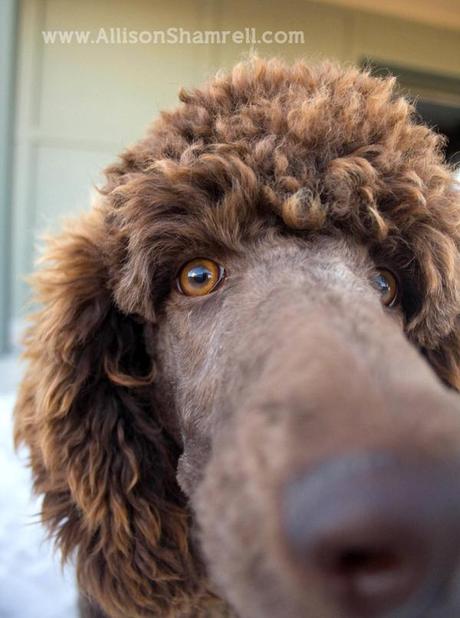
Can you guess what I had in my hand, right next to my camera? It was a nice big treat, and this dog Oliver knew he wanted it. So, I took the photo when he was practically able to eat it out of my hand, and this comical shot was one of my client’s favorites from their whole session.
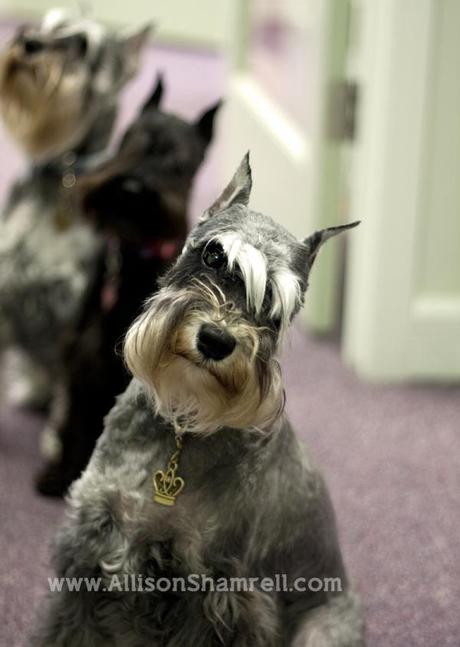
I photographed these Schnauzers at their parents’ office building, where they got to spending every day (lucky dogs!). The entire small staff was around to “help” with our session, so I knew I wouldn’t disturb anyone by making a weird noise. Plus, offices are generally quiet places, so I definitely got the attention of this dog Jolie when I chirped like a bird. Her parents laughed pretty hard when they saw how she tiled her head.
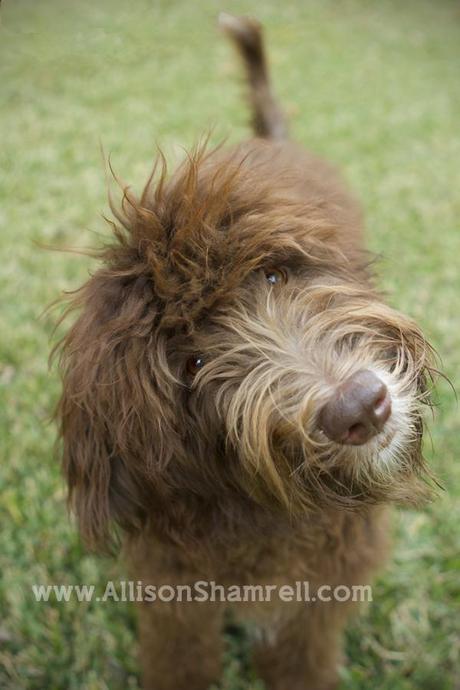
Another head tilt! You guessed it, I made another embarrassing noise here. But look closer: similar to the image of Jolie, I used a shallow depth of field (controlled by my aperture) to gently fade out the background into a nice, creamy blur. That helped keep the focus on this dog Dixie’s comically tilted head. If you don’t know what the words “aperture” or “depth of field” mean, break out your camera’s manual.
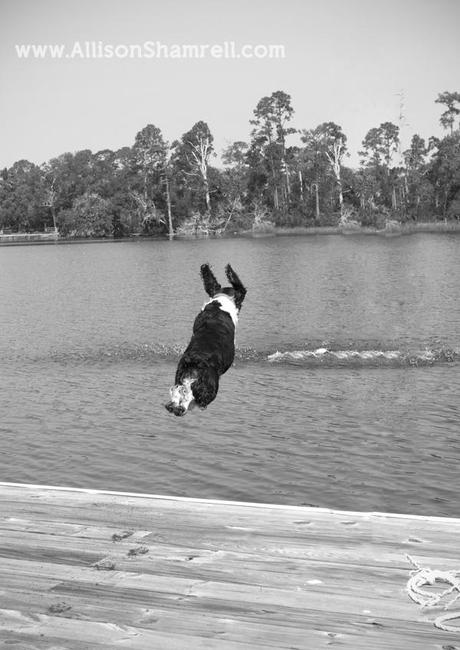
This dog Bethany didn’t hesitate to jump off the dock to chase the toy her dad threw, and she was also really quick. I had to be ready with my shutter speed. Not sure what I mean? Again, break out that manual.
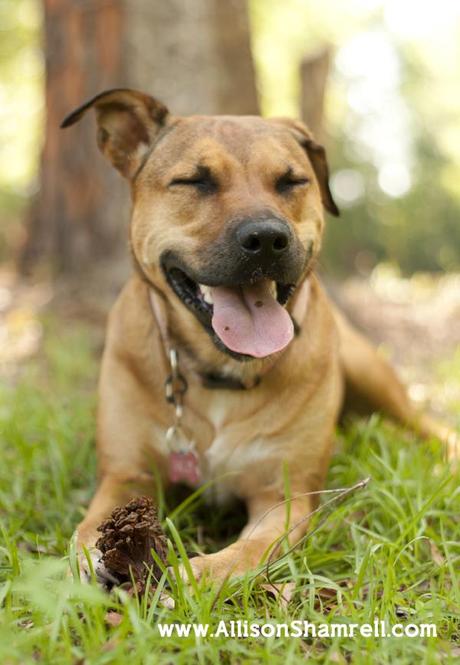
This is my dog! Bailey loves to chew on pine cones, and I think she looks really pleased with herself for finding a good one to gnaw on in this photo. This would have looked very different if I hadn’t bothered to get down on her level. To get this shot, I actually laid on my belly in the grass next to her. I think it gives the photo a great dimension that you wouldn’t get if you just looked down at her.
The next post will include tips on what to do once you’re done shooting.
About the Author
My name is Allison Shamrell and I’m a pet photographer in Pensacola, Florida. I am completely in love with my job. I have a dog, Bailey, who I consider to be my daughter. I’d do pretty much anything to see her happy, and if you feel the same way about your dogs, just follow my tips to photograph them
